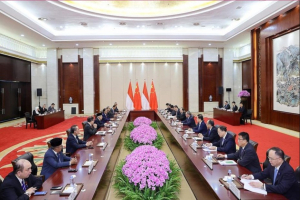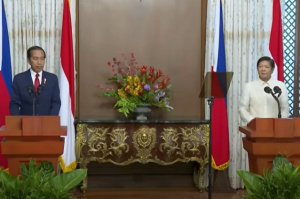ASEAN still relieson fossil-based energy in electricity growth
The latest report by energy think tank EMBER reveals that last year 3.6 percent of ASEAN power growth was contributed by fossil fuel power plants amidst underperformed energy capacity of renewable energy in the region.
The report, titled “ ASEAN’s clean power pathways: 2024 insights”, also reveals that Indonesia contributed 11 terra-watt hour (TWh) of coal fired power plant hike that made it the biggest young coal fired plant user.
In 2023, fossil fuels dominated ASEAN power plant with 74 percent , with coals contributing 44 percent of them.
Ember is an energy think tank that focuses on accelerating the clean energy transition using data and policy insights. It collects information about national renewables targets from various countries, representing a significant portion of global power demand.
While renewable energy only contributed 26 percent, it was a decline from 28 percent in 2022. High dependency on fossil energy made ASEAN carbon emission increased 6.6 percent to 718 million per CO2 last year. Indonesia and Vietnam are the biggest contributors of the emissions with respective contribution of 14 millions tons and 20 millions tons.
The report estimated that power demand in ASEAN will increase 41 percent in 2030, underlined the importance of the countries in the region to quickly switch to renewable energy.
Several projections calculated ASEAN renewable energy capacity needs to increase 3-5 times in 2035. However, based on the existing plan, power growth in the region will be fulfilled by fossil based power plants, because several countries are still relying on dirty energy such as Singapore and Malaysia that depend on gas and Indonesia that still maintain its coals.
The drops of solar energy cost between 55-81 percent and wind power for 33-35 percent are opportunities for ASEAN to differsify energy.
“By the drop of renewable energy, ASEAN region has opportunity to accelerate the development of renewable energy, mainly solar energy and wind energy to meet the growth of electricity demand and climate target,” Dinita Setyawati, Senior Analyst of Southeast Asia Power Policy at EMBER, said on Tuesday, Octobe 22, 2024.
EMBER report revealed that the development of solar and wind energy in ASEAN will be complementary if they are supported by cross countries power network. For example, solar power plant capacity in Malaysian peninsula and Singapore has peaked at 20 percent in January-April 2024 aligned with the capacity of Indonesia wind power plants that has reached 30 percent in May-October. This condition helpsbalance cross countries power demand and supply.
Currently from 18 cross countries power network plans, eight networks have been constructed and allowed the export of power until 7.7 gigawatt. The power network that links Laos, Thailand, Malaysia until Singapore is milestone for regional energy cooperation in ASEAN. The next ASEAN Power Grid is a cross countries network of Brunei Darussalam, Indonesia, Malaysia and the Philippine.
Better interconnected power network, the use of storage batteries, and the adoption of innovative technology that support green flexibility can support energy transition in ASEAN. This also will have impact on economic growth , energy resilience and sustainability.
“ASEAN transition to renewable energy has promises to open new jobs, strong energy resilience and economic growth .Joint efforts through interconnected program and international cooperation offers solutions for various challenges faced by the region,” Dinita said.
Jobs created by energy transition will benefit coal producing countries. In Indonesia, renewable energy can produce 96 thousands of new jobs in coal producing areas. By realocation and re-training, more than 1 million jobs can replace 31 thousands jobs lost due to energy transitions.
Expensive bioenergy
In ASEAN, bioenergy can be seen as renewable energy that has significant potential to develop the economy, However, based on EMBER report , average cost of bioenergy power production is the most expensive in comparison with other renewable energy.
Bioenergy cost is four times more expensive than hydro energy in several countries.
For example, biomass based power plants in Indonesia, Malaysia and Thailand costs around US$59-98 per megawatt hour (MWh) . The cost is more expensive than the cost of hydro power plant in Laos that cost US$25/MWh.
In Indonesia bioenergy cost is more expensive because the burn and biomass technology that hail from plantation waste such as palm oil residue. With the average constriction cost untul US$4.400 per megawat electric, the average cost of bioenergy cost can reach US$87/MWh. This shows the bioenergy financial challenge in comparison with other renewable energy.
Tag
Already have an account? Sign In
-
Start reading
Freemium
-
Monthly Subscription
30% OFF$26.03
$37.19/MonthCancel anytime
This offer is open to all new subscribers!
Subscribe now -
Yearly Subscription
33% OFF$228.13
$340.5/YearCancel anytime
This offer is open to all new subscribers!
Subscribe now






